DevOps
What is Docker Networking ?
Introduction
Docker networking enables communication between various containers and the external environment. It can be difficult to understand networking if you are new to Docker. This guide will provide examples and a straightforward explanation.
What is Docker Networking ?
Containers communicate with other systems and with each other over Docker networking. Imagine it as your home's local network, where your computers, phones, and smart TVs are all connected to WiFi and can communicate to each other.
Docker offers a variety of networking options, each with a distinct function.
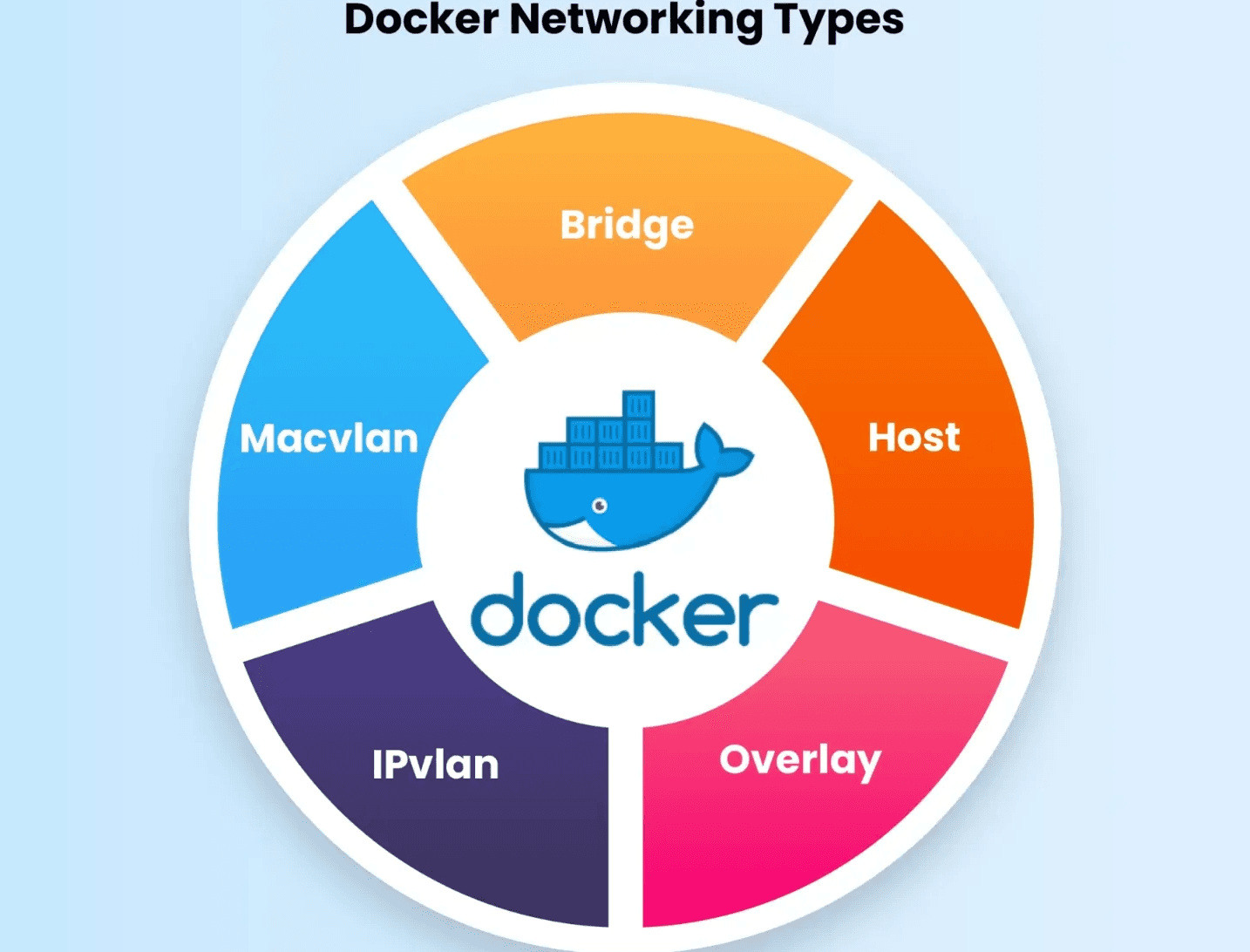
Docker Network Types
1. Bridge Network
- When a container is started without a network specified, a bridge network is automatically established.
- Similar to a home WiFi, this allows gadgets to talk with each other but are isolated from the outside world.
Example: docker network ls # List all networks
docker run -d --name my_container nginx
docker inspect my_container | grep IPAddress # Check container's IP
Here, the container runs in a bridge network and gets an IP.
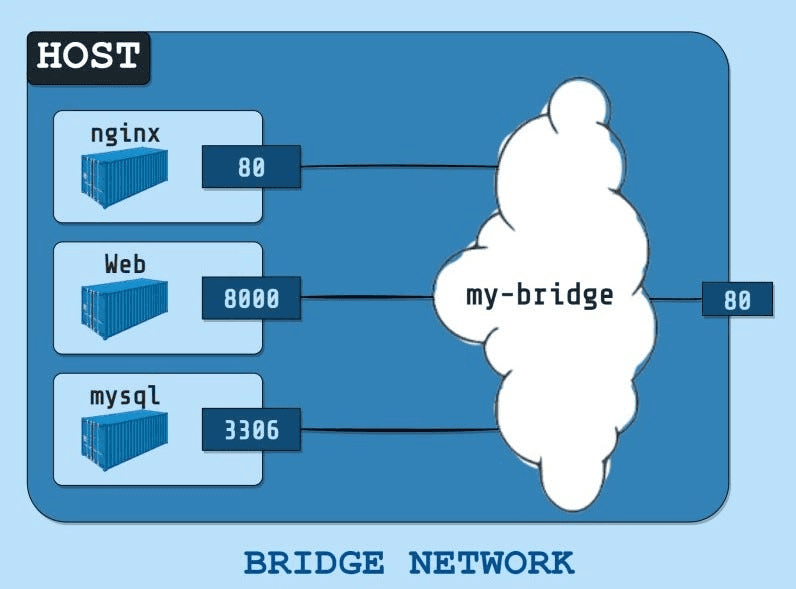
2. Host Network
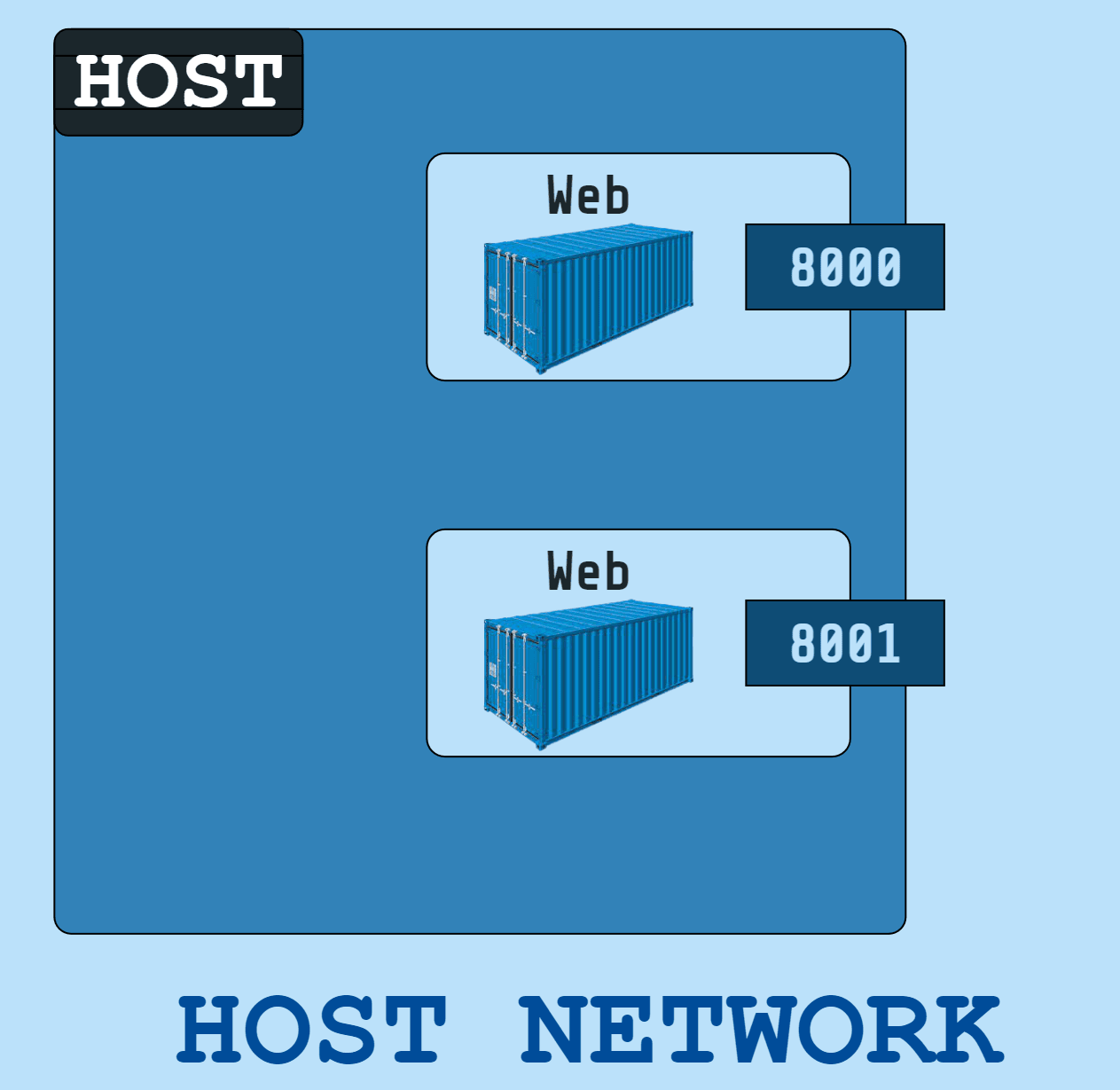
The container shares the host machine’s network.
Useful when you don’t want network isolation between the container and the host.
Example:
docker run -d --name my_container --network host nginxHere, nginx runs directly on the host network without its own IP.
3. None Network
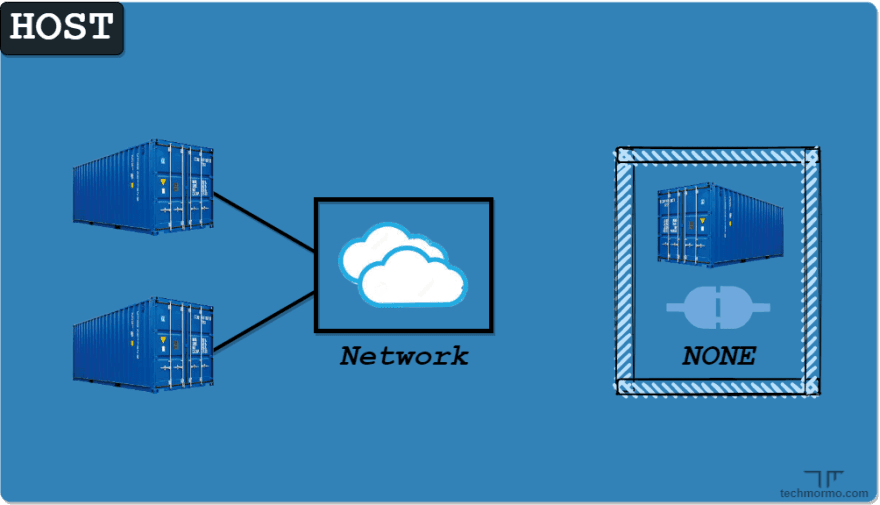
The container has no network access.
Useful for security reasons when you don’t want external communication.
Example:
docker run -d --name my_container --network none nginx
4. Overlay Network
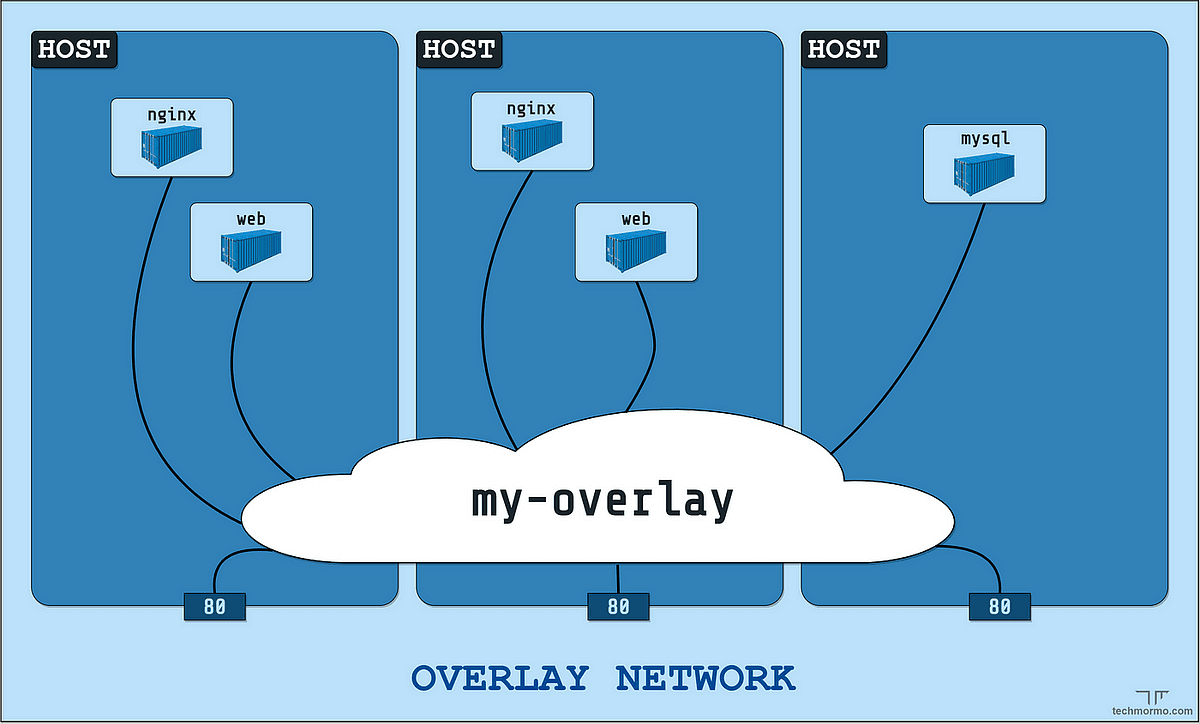
- Connects containers across multiple Docker hosts.
- Used for scaling applications.
Example:
docker network create -d overlay my_overlay_network
5. Macvlan Network
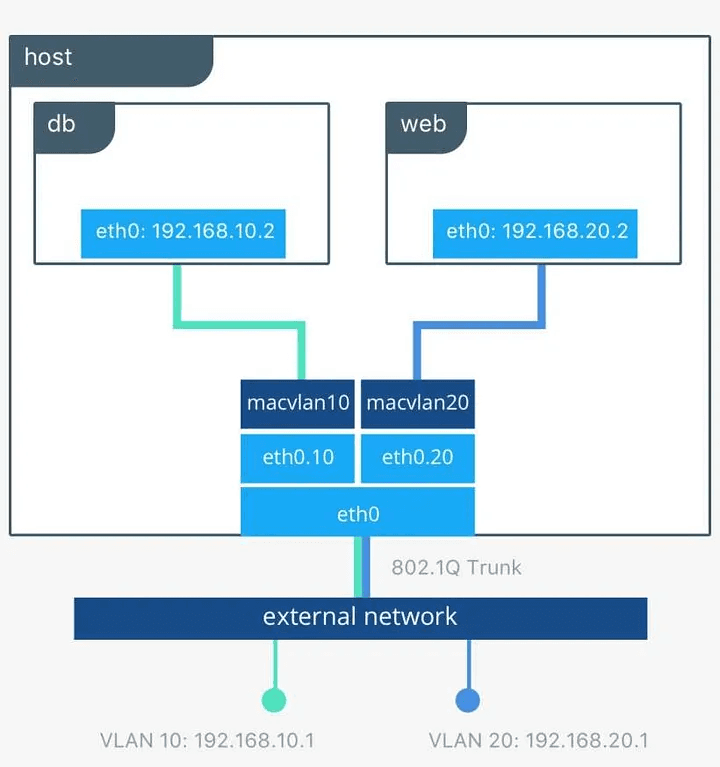
Give a MAC address to the Docker container. With this Mac address, the Docker server routes the network traffic to a router.
Useful when containers need to be part of the external network.
Example:
docker network create -d macvlan \
--subnet=192.168.1.0/24 \
--gateway=192.168.1.1 \
-o parent=eth0 \
my_macvlan_network
6.IPvLAN Network
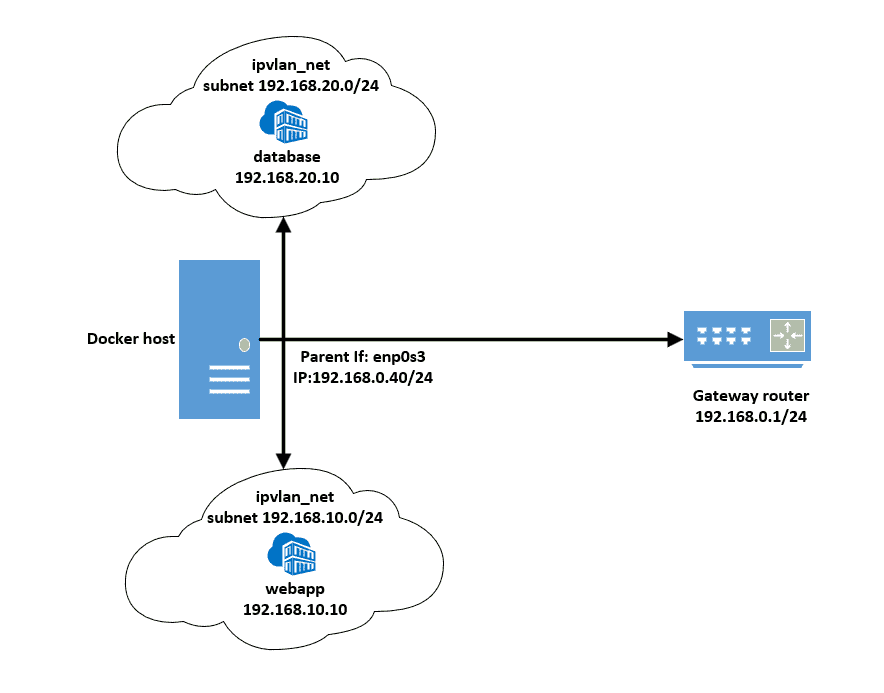
- Offers precise control over the IPv4 and IPv6 addresses assigned to your containers, as well as layer 2 and 3 VLAN tagging and routing.
- Useful when you are integrating containerized services with an existing physical network. IPvLAN networks are assigned their own interfaces, which offers performance benefits over bridge-based networking.
Example:
docker network create -d ipvlan \
--subnet=192.168.70.0/24 \
--gateway=192.168.70.1 \
--aux-address="Ubuntu-Docker-Server=192.168.70.2" \
-o ipvlan_mode=l2 -o parent=eno1 ipvlan70
Checking and Managing Networks
List all networks:
docker network lsInspect a network:
docker network inspect bridgeRemove a network:
docker network rm my_network
Advantages of Docker Networking
- Isolation: Containers are separated from the host and each other unless configured otherwise.
- Flexibility: Multiple networking options for different use cases.
- Scalability: Overlay networks allow scaling across multiple hosts.
- Performance: Host and Macvlan networks offer near-native speeds.
Disadvantages of Docker Networking
- Complexity: Advanced networking like overlay and Macvlan require deeper knowledge.
- Security Risks: Exposing containers to the host network can introduce vulnerabilities.
- Limited Cross: Platform Support – Some networks, like Macvlan, might not work on all platforms.
Conclusion
Docker networking helps containers communicate efficiently. Beginners should start with bridge and host networks before moving to advanced options like overlay and macvlan. By understanding how networks work, you can manage containerized applications better.
Ready to transform your business with our technology solutions? Contact Us today to Leverage Our DevOps Expertise.

Contact Us